As we move through the 21st century, urban property development is undergoing a significant transformation. Rapid technological advancements, changing demographics, and evolving urban planning philosophies are driving these changes, making property development in cities more dynamic and innovative. This article explores the new trends and developments shaping urban property development, offering insights into urban planning, the rise of smart cities, and key areas for future growth.
The Rise of Smart Cities
One exciting trend in urban property development is the emergence of smart cities. These cities use cutting-edge technology to improve infrastructure, enhance sustainability, and offer better living conditions for residents. Smart cities utilise the Internet of Things (IoT) to connect various aspects of urban life, including transportation, energy management, waste management, and public safety.
For property developers, this trend means incorporating smart technology into their projects. Buildings with advanced smart systems can monitor and optimise energy use, enhance security with state-of-the-art surveillance, and improve resident comfort with automated climate control. As smart cities expand, property developers must adapt to these technological advancements to meet the demands of modern urban living and keep their projects relevant and appealing.
Sustainable and Green Development
Sustainability is no longer just a buzzword; it’s a critical part of modern property development. Urban areas are increasingly adopting green building practices to reduce environmental impact. This includes using renewable energy sources, selecting energy-efficient materials, and implementing sustainable construction practices.
Green roofs, solar panels, and rainwater harvesting systems are becoming standard features in new urban developments. Additionally, mixed-use developments—combining residential, commercial, and recreational spaces—are becoming more popular. These developments reduce the need for long commutes and lower carbon emissions, while also fostering a stronger sense of community among residents.
Evolving Urban Planning and Future Growth Areas
Urban planning is continuously evolving to meet the growing populations and changing needs of city dwellers. Future growth areas are identified based on infrastructure development, economic opportunities, and environmental sustainability. Cities are expanding public transportation, creating pedestrian-friendly spaces, and revitalising underutilised areas to meet these needs.
A notable trend is the redevelopment of brownfield sites—previously industrial or commercial areas repurposed for residential and mixed-use developments. This rejuvenates neglected parts of cities and helps manage urban sprawl by efficiently using existing spaces. Such transformations are crucial for sustainable urban growth and improving the quality of life for all residents.
Impact of Demographic Changes
Demographic shifts are significantly influencing urban property development. As urbanisation increases, there’s a growing demand for affordable housing and rental properties, especially among millennials and Generation Z. These younger generations prioritise convenience, connectivity, and community, driving the need for well-planned urban spaces that offer a high quality of life and meet their lifestyle preferences.
An ageing population also increases the demand for senior-friendly housing and healthcare facilities. Property developers must be aware of these demographic trends and incorporate them into their designs to create inclusive urban spaces that cater to diverse age groups and lifestyles, ensuring long-term relevance and success.
Innovative Design and Architecture
Innovative design and architecture are central to urban property development. Architects and developers are pushing boundaries with modular construction, vertical gardens, and the adaptive reuse of buildings to create aesthetically pleasing and functional urban environments. The integration of art and culture into urban design is also becoming more important, enhancing the livability and overall appeal of urban spaces. By fostering creativity and innovation, developers can create vibrant, engaging, and sustainable urban areas.
The future of urban property development is set to be transformative, driven by smart technology, sustainability, innovative urban planning, and demographic changes. As cities continue to evolve, property developers must embrace these trends and innovations to create vibrant, livable, and sustainable urban environments. Staying ahead of these developments allows developers to significantly contribute to the growth of smart cities and the overall improvement of urban living standards. Success in urban property development hinges on adaptability, forward-thinking, and a commitment to building spaces that meet the needs of present and future generations.






